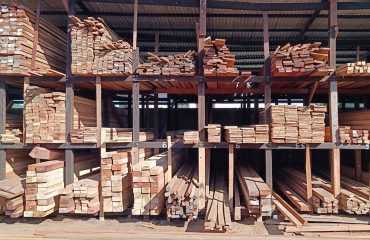body { font-family: sans-serif; line-height: 1.6; }
h1, h2, h3 { color: #333; }
img { max-width: 100%; height: auto; }
Modular steel systems are revolutionizing the construction, industrial, and commercial sectors. Their inherent flexibility, speed of assembly, and cost-effectiveness are making them a highly attractive alternative to traditional methods. This comprehensive guide delves into the world of modular steel, exploring its advantages, applications, and the future of this innovative technology.
Design Flexibility: Tailoring Steel Solutions to Your Needs
One of the most significant advantages of modular steel systems is their unparalleled design flexibility. Unlike traditional construction methods that often involve rigid designs and limited customization, modular steel allows for a high degree of personalization. Whether you need a simple storage unit, a complex industrial facility, or a multi-story building, the system can be adapted to meet specific requirements. This flexibility extends to:
- Size and Dimensions: Modules can be designed and manufactured in various sizes and configurations, allowing for precise fit and optimal space utilization.
- Functional Requirements: The internal layout of each module can be customized to accommodate specific machinery, equipment, or office spaces.
- Aesthetic Considerations: Exterior finishes can be tailored to match existing structures or create a unique visual identity for your project.
- Sustainability Features: Modular designs can readily incorporate sustainable materials and energy-efficient technologies, reducing the environmental impact of the project.
This adaptability makes modular steel an ideal solution for projects with evolving needs or those requiring frequent modifications.
Cost-Effectiveness: Reducing Construction Time and Expenses
Modular steel systems offer significant cost savings compared to traditional construction methods. The prefabrication aspect of the process is a key factor in reducing overall costs. Modules are manufactured off-site in a controlled environment, minimizing weather delays and labor costs associated with on-site construction. This streamlined process leads to:
- Shorter Construction Timelines: Prefabrication significantly accelerates the construction process, resulting in faster project completion and quicker return on investment.
- Reduced Labor Costs: Less on-site labor is required, reducing labor costs and minimizing potential labor disputes.
- Lower Material Waste: Precise manufacturing techniques minimize material waste, resulting in cost savings and reduced environmental impact.
- Simplified Logistics: Modules are transported to the site ready for assembly, simplifying logistics and reducing transportation costs.
The overall cost-effectiveness of modular steel makes it a compelling choice for projects with budget constraints.
Sustainability and Environmental Impact: Building Green with Steel
Modular steel construction contributes significantly to sustainable building practices. Steel is a highly recyclable material, and the prefabrication process minimizes waste generation. Furthermore, the efficiency of modular construction reduces the overall environmental footprint of a project. Key sustainability aspects include:
- Recyclability of Steel: Steel is 100% recyclable, making modular steel structures environmentally friendly throughout their lifecycle.
- Reduced Waste Generation: Prefabrication minimizes on-site waste and reduces the need for landfills.
- Energy Efficiency: Modular designs can easily incorporate energy-efficient features, reducing operational costs and environmental impact.
- Reduced Transportation Emissions: Efficient transportation of prefabricated modules reduces fuel consumption and emissions.
Choosing modular steel is a conscious decision towards environmentally responsible construction practices.
Applications Across Industries: Versatility in Action
The versatility of modular steel systems extends across diverse industries. Their adaptability makes them suitable for a wide range of applications, including:
- Commercial Buildings: Offices, retail spaces, and restaurants can benefit from the speed and cost-effectiveness of modular construction.
- Industrial Facilities: Warehouses, factories, and processing plants can be efficiently constructed using modular steel systems.
- Residential Housing: Modular steel can be used to create affordable and sustainable housing solutions.
- Healthcare Facilities: Modular construction can provide quick and cost-effective solutions for temporary or permanent healthcare facilities.
- Educational Buildings: Classrooms, libraries, and administrative buildings can be efficiently constructed using modular steel.
The diverse applications demonstrate the adaptability and scalability of modular steel solutions.
The Future of Modular Steel: Innovation and Advancement
The modular steel industry is constantly evolving, with ongoing innovation driving advancements in design, materials, and construction techniques. Future developments are likely to include:
- Advanced Materials: The integration of high-strength, lightweight steels and other advanced materials will further enhance the performance and sustainability of modular structures.
- Automation and Robotics: Increased automation in the manufacturing process will further improve efficiency and reduce costs.
- Smart Building Technologies: The incorporation of smart building technologies will enhance the functionality and energy efficiency of modular structures.
- Prefabricated MEP Systems: The prefabrication of mechanical, electrical, and plumbing (MEP) systems will further streamline the construction process.
- 3D Printing of Steel Components: Emerging 3D printing technologies could revolutionize the manufacturing of modular steel components.
The future of modular steel looks bright, promising even greater efficiency, sustainability, and design flexibility.
Tags: Modular Steel Buildings, Steel Construction, Prefabricated Structures, Modular Steel Systems, Sustainable Construction




